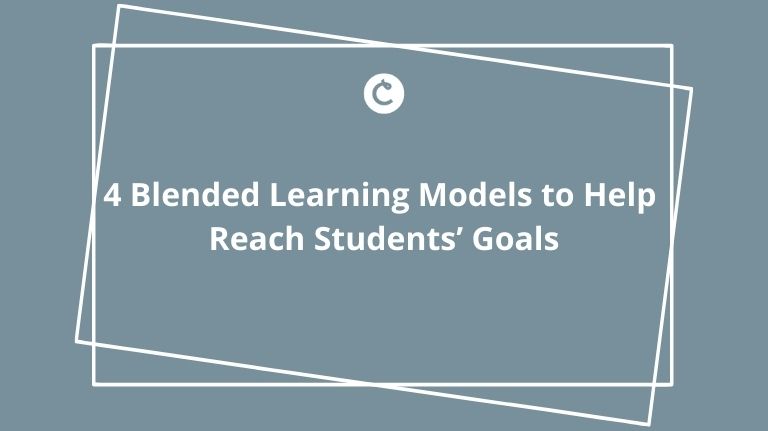4 Blended Learning Models to Help Reach Students’ Goals
A couple decades ago, the idea of blending electronic technology and traditional classroom teaching would not have been possible. Not every student had a computer in their home and reliable internet was not available in every school. Yet, in only the last few years (2013-2016), the availability of reliable Wi-Fi access in US K-12 public classrooms has more than tripled and is likely to reach nearly 100% availability by 2020. With the increasing reach of technology, it’s only natural for educators to use digital tools to supplement face-to-face teaching. Blended learning goes by many different names. Hybrid learning. Flipping the classroom. Blended education. Essentially, they all imply a method of learning that combines classroom and online education. More intricately, the Online Learning Consortium defines blended education as courses that “integrate online with traditional face-to-face class activities in a planned, pedagogically valuable manner.”

While there are debates about the efficacy of blended education, the combination of face-to-face and digital teaching methods is that students are engaged in an interactive learning experience, which in effect transforms and improves the learning process as a whole, is invaluable. Mark, a high school science teacher, tells us:
By supplementing my lessons with the use of digital tools and activities, I’m able to engage a variety of learners in different ways. I’m constantly amazed at what tasks certain students are more engaged with based on the type of learner they are. Combining digital and traditional classroom lessons not only engages my students more, but it offers me a way to interact with them on their level; I’m always learning new things from them. Think about it, these kids inherently know more about technology than I ever will!
As blended education has become more prominent, different models of hybrid learning have developed. Choosing the blended learning model that’s right for your classroom depends on your students’ needs. You may have some students that need more attention while others are ahead of the curriculum. Here, we’ll outline four blended learning models and share some ideas on how you can put these models into action.
1. Face-to-face Driver Model – This is a good option for classrooms where students are performing at various levels of skill and ability. It’s the closest model to traditional teaching, as most of the class is led by face-to-face lessons. Online instruction is introduced for students that are behind, to engage and supplement the in-class lessons. For example, in an ELL class, you can search and find a Classtime question set for students who may be struggling with adverbs, share the session code and then they can work on the practice questions at home. These students are then able to get practice and take the time they need to master the lesson.
QUICK TIP: Classtime is not only a great online tool to create, share and analyze your lessons, but you can also use interactive Collaborative Challenges to gamify your classroom in real-time. Check them out!
2. The Rotation Model – In this model, teachers create different learning stations. Using digital learning tools at rotating stations, teachers are able to focus the face-to-face time based on specific student needs. Essentially, you create a schedule for students to work at different stations, moving between face-to-face instruction and online assignments. This gives them the time and focus they need on certain subjects while allowing different learners various avenues towards mastering the material. If you have an elementary classroom, you can divide them based on their skill levels in reading and math. For the group that performs well in reading, but maybe not math, you can spend the face-to-face teaching time with more attention on learning math concepts before rotating to digital learning stations for reading comprehension.
3. Self-Blend Model – This model is on the rise, especially in high schools. Students are given the opportunity to take classes beyond the general course catalog with online classes. Students who want to take additional Advanced Placement classes or show a particular interest in a subject are good candidates for self-blended learning. This should be determined and discussed based on individual student goals and skills.
4. The Online Driver Model – On the flip side of the face-to-face driver model, the online driver model relies solely on online teaching delivery. Students work from remote locations and receive instruction and assignments via online platforms. Educators act as facilitators and give students the opportunity to check-in and engage in online messaging if they need further assistance. This model works well for students with chronic illnesses, students who need flexibility for other obligations, or students who want to progress much faster than would be possible in a traditional school setting.
While technology and online learning landscapes are paving new ways for students to engage and take control of their educational journey, teachers still hold the key to success. Before implementing a blended learning model, it’s important to clearly map out your class goals, assignments, and outcomes so students are aligned with the overall learning objectives.
Classtime can help you get started with blended learning in the classroom today:


Miah
April 18, 2022 at 11:58 amNice article! Thanks for sharing this informative post. Keep posting!